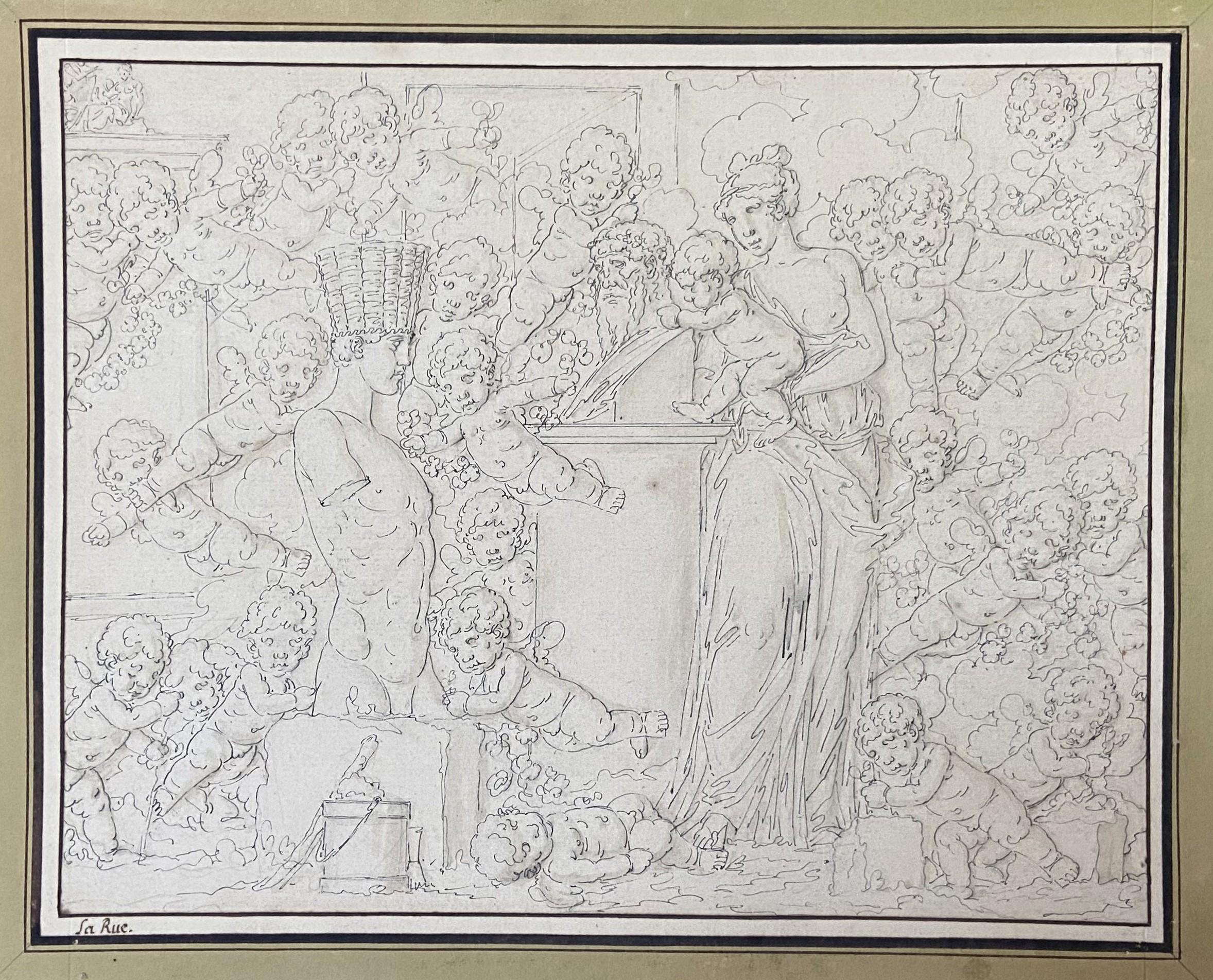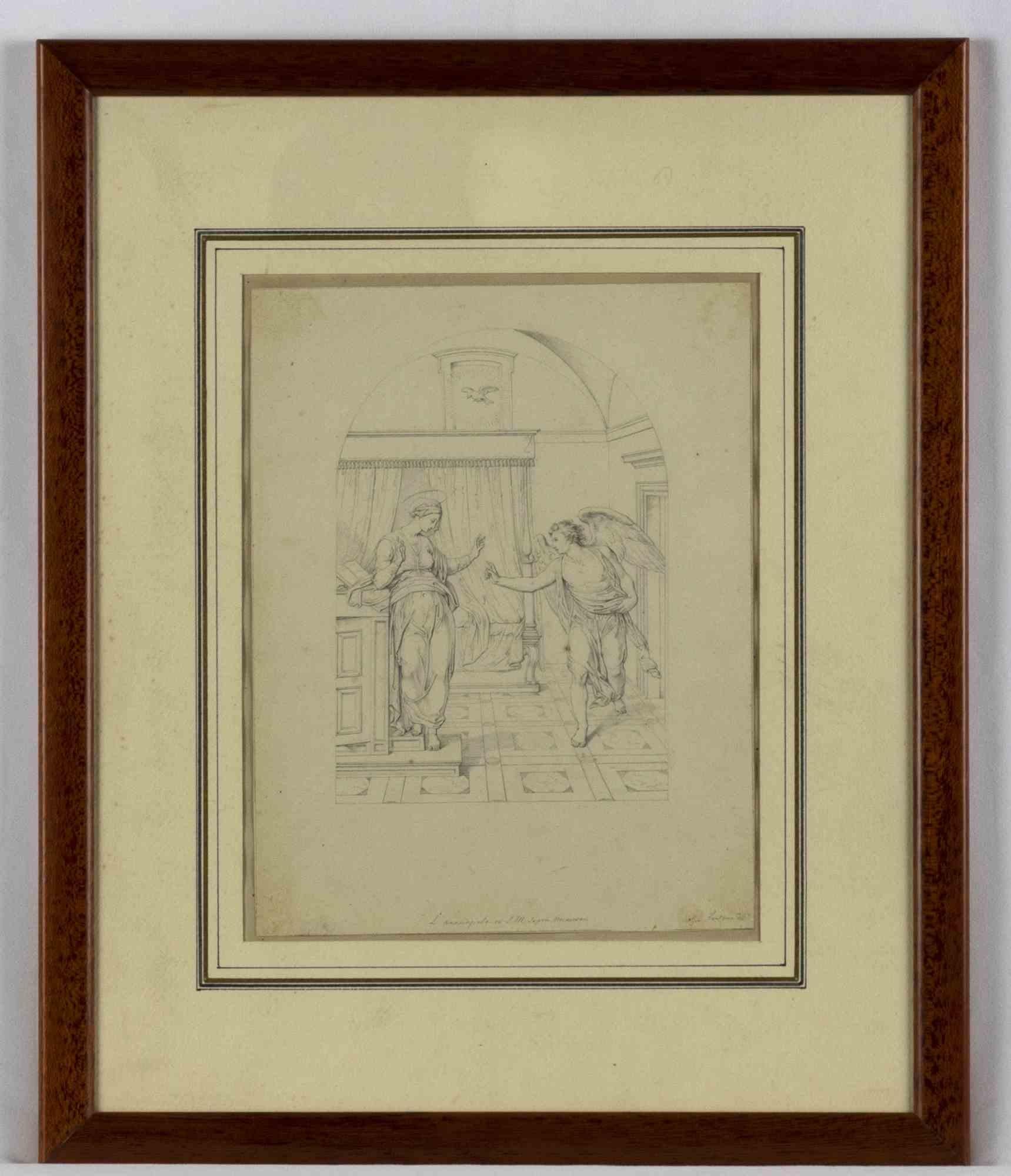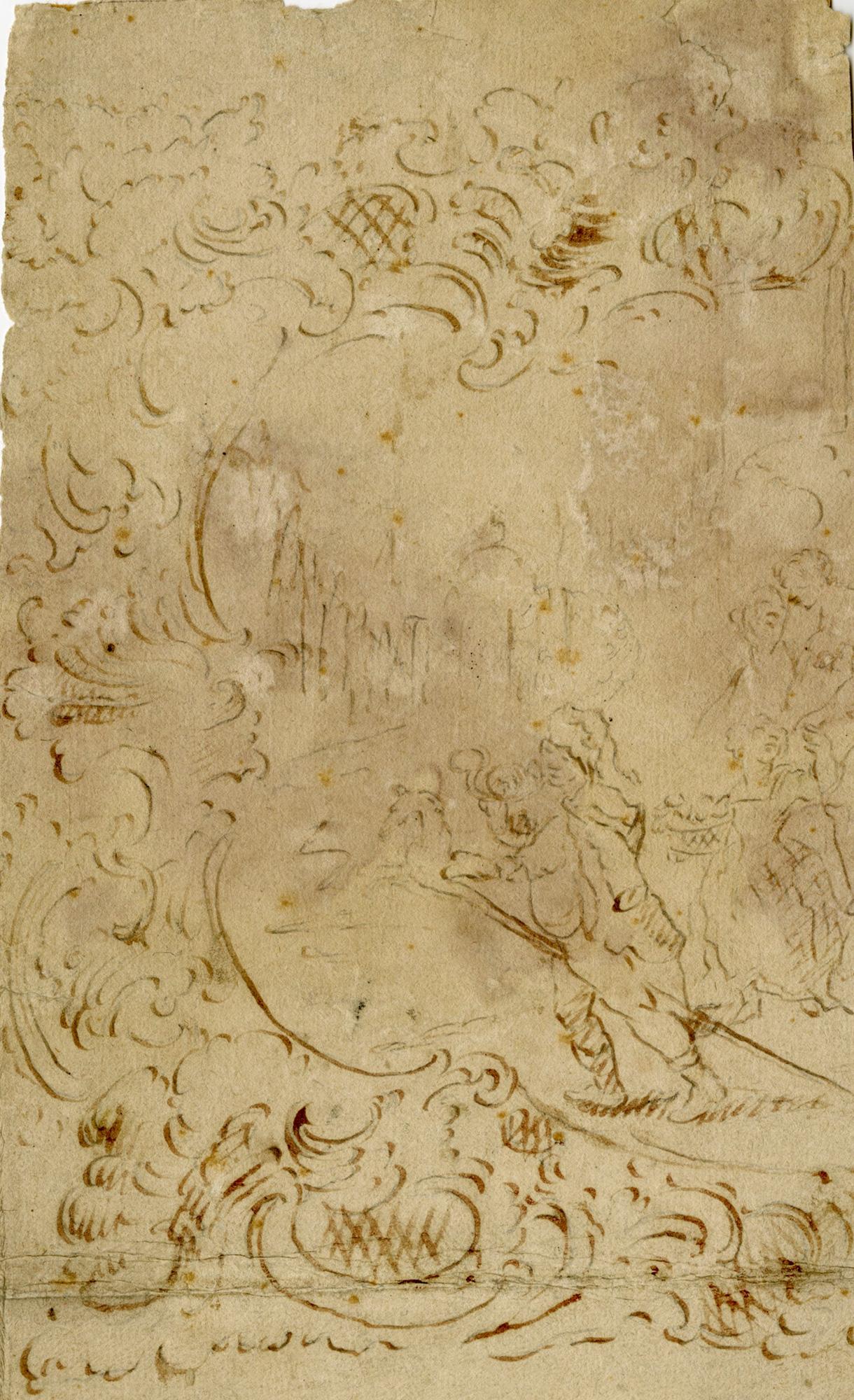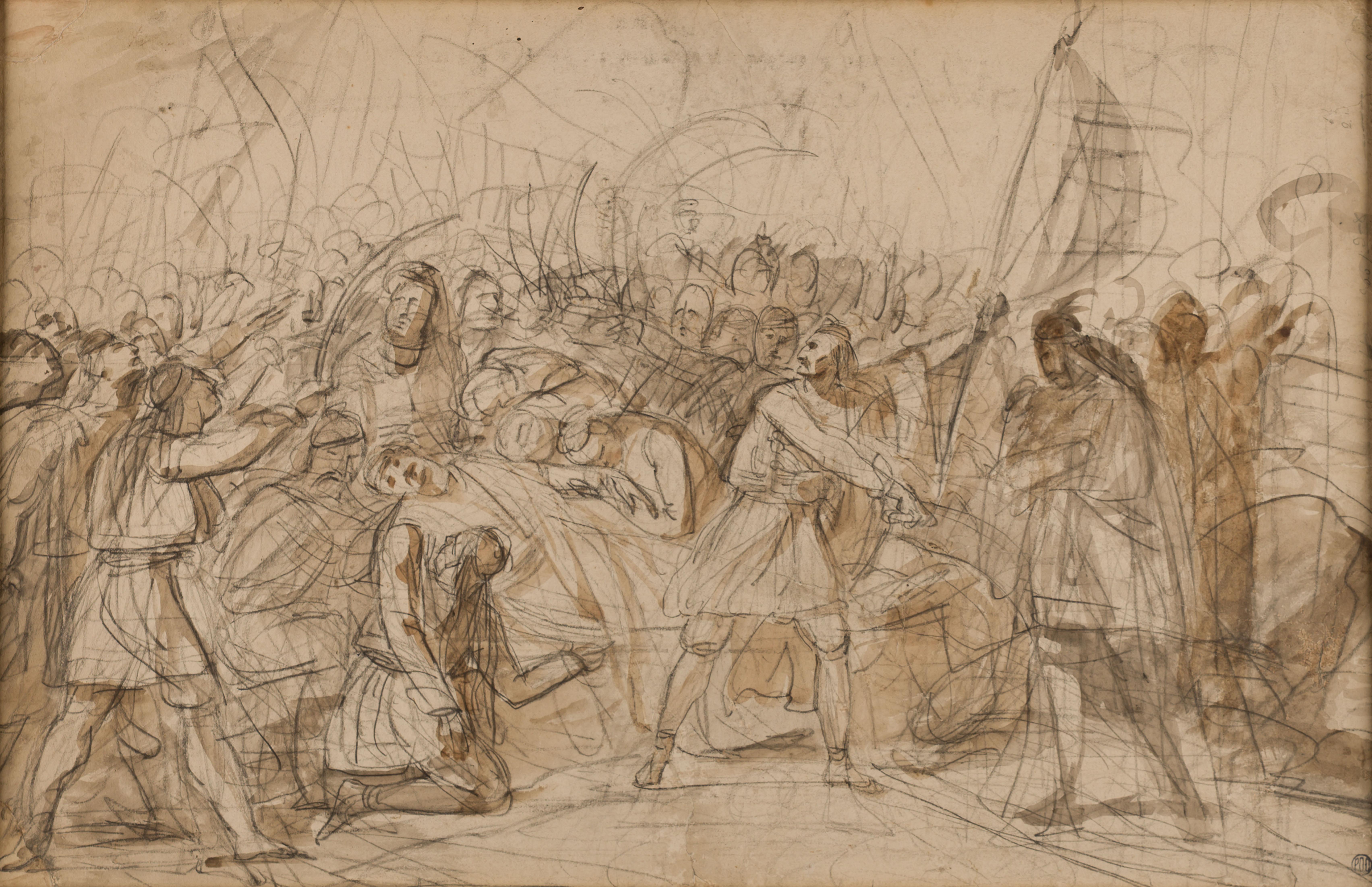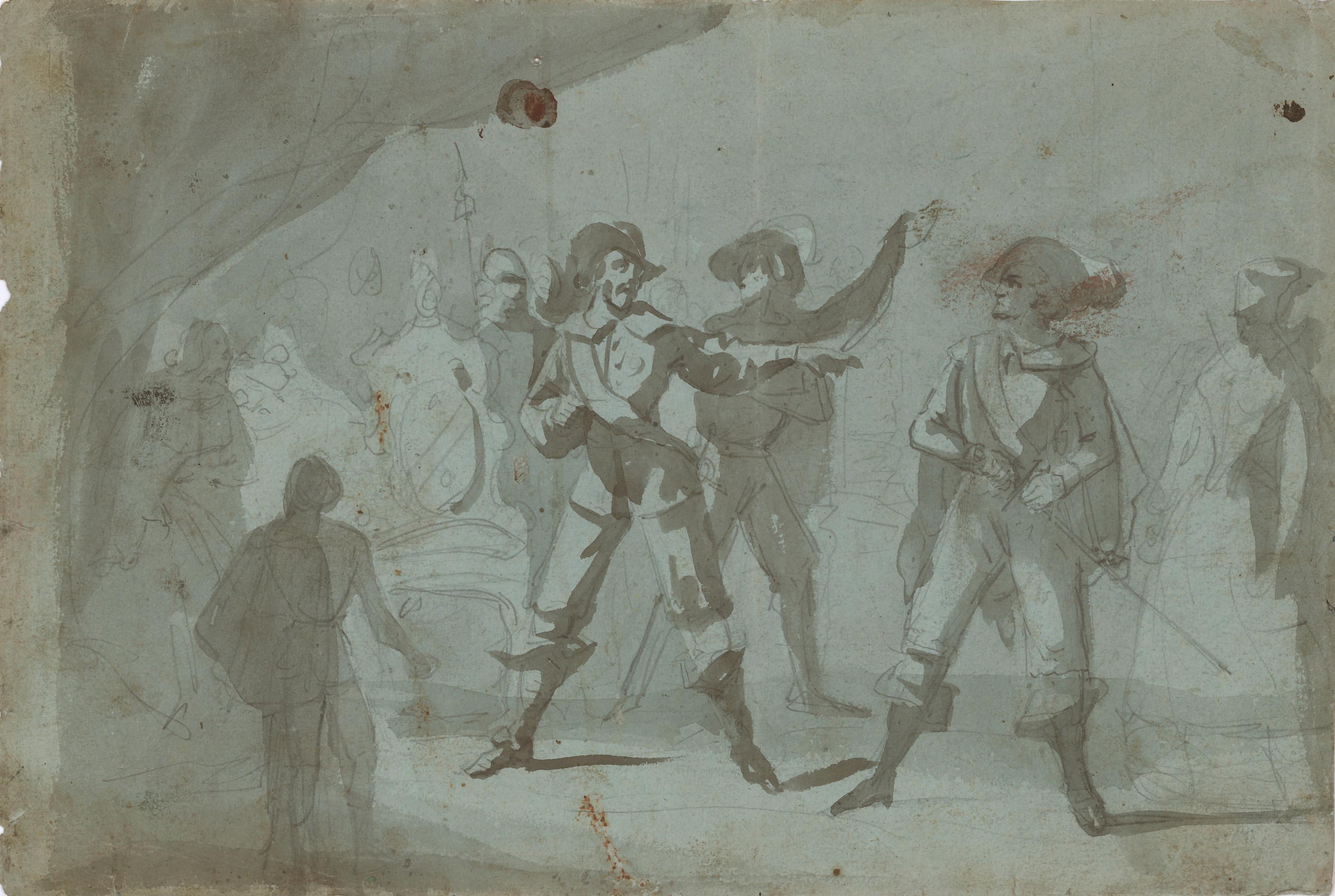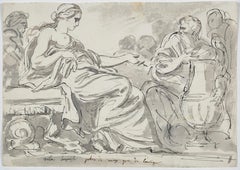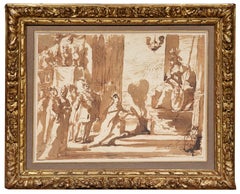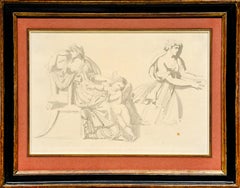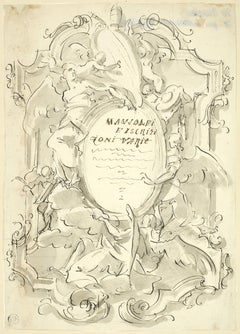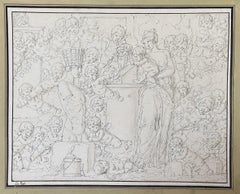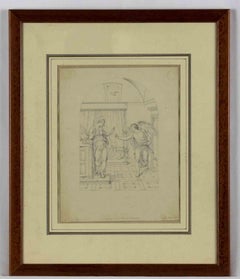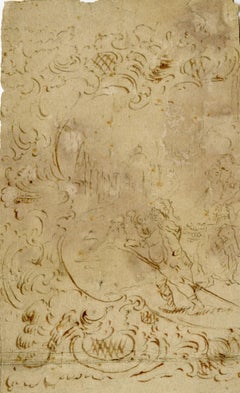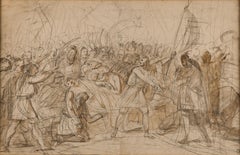Items Similar to Study for « The Chinese Masquerade » by Jean-Baptiste Pierre (1714 - 1789)
Want more images or videos?
Request additional images or videos from the seller
1 of 10
Jean-Baptiste PierreStudy for « The Chinese Masquerade » by Jean-Baptiste Pierre (1714 - 1789)1735
1735
$28,010.16
£20,740.60
€23,500
CA$38,518.17
A$42,835.93
CHF 22,422.63
MX$522,546.29
NOK 281,748.57
SEK 265,020.90
DKK 178,920.48
About the Item
Arriving in Rome in June 1735 as a resident at the Royal Academy, Pierre was unable to attend the Winter Carnival festivities of 1735, which he nevertheless immortalised in an engraving made shortly after his arrival. This drawing, probably a preparatory one, shows the full extent of his talent and is a rare testimony to his early works, since it is probably the oldest surviving drawing by the artist.
1. The sojourn in Rome, a key stage in the life of Jean-Baptiste Marie Pierre
Jean-Baptiste Marie Pierre was born in Paris on March 6, 1714 into a wealthy family of goldsmiths and jewellers. His father Jean Pierre was elected alderman in 1743, which ennobled him. This family affluence gave him access to academic studies with a tutor. Pierre became a pupil of the painter Nicolas Bertin (1668-1736) and took courses at the Royal Academy of Painting and Sculpture where he became friends with the engraver Charles-Nicolas Cochin le Fils (1715 - 1790). This friendship also led him to the workshop of Cochin le Père (1688 - 1754) from whom he probably learned engraving and who made him aware of Watteau's art.
In 1734, he was awarded the Academy’s grand prize for painting for his work Sanson, whose hair was cut by Delilah (the present whereabouts of which is unknown). He was then allowed to join the Académie de France in Rome, under the direction of the painter Nicolas Vleughels (1688-1737). He stayed in Rome from June 1735 to June 1740.
Back in Paris in 1740, his success meant that in 1752, he became First Painter to the Duke of Orleans for whom he painted several ceilings at the Palais-Royal and the Château de Saint-Cloud. Between 1752 and 1757 he also painted two domes for the church of Saint-Roch in Paris. He became First Painter to the King in 1770, following François Boucher, and exerted a determining influence on the art and artists of his time. He reserved his talents as a painter exclusively for royal commissions and died on 15 May 1789, on the eve of the Revolution.
2. The Chinese Masquerade, one of his first engravings
Arriving in Rome at the end of June 1735, shortly after his arrival Pierre engraved La Mascarade Chinoise faite à Rome le Carnaval de l'année MDCCXXXV par Messieurs les Pensionnaires du Roy de France en son Académie des arts, which he dedicated to the Duke of Saint-Aignan, French Ambassador in Rome from 1732 to 1740. Perhaps this was a commission from the Duke, who was aware of Pierre's engraving talents, or a way for the young artist to secure his protection? The engraving shows the moment when the chariot of residents passes in front of the Antonine column in the Piazza Colonna, almost opposite the Palazzo Mancini, the seat of the Académie de France in Rome.
Pierre was probably inspired by the memories of his new comrades at the Académie de France, or by drawings they would have made during the Carnival. It is also likely that he was able to actually see and draw for himself the float used for the parade, which was probably still in existence when he arrived in Rome a few months later.
3. Similarities and differences
The engraving is slightly smaller than our drawing (30.5 x 42.5 cm compared to 34.4 x 51 cm). It obviously shows the design inverted in relation to the drawing from which the plate used for printing was made. It is interesting to see both the drawing and part of the engraving side by side corresponding to the (inverted) float shown on the drawing. This comparison shows that, despite some differences, the two artworks are very similar, both in their general conception and in many ornamental details.
The drawing only shows the float without the urban landscape in the background. The general composition of the two artworks is very similar: a chariot drawn by two horses moves forward, accompanied by several figures also dressed as Chinese who walk beside it and at the back of the float. In the chariot are the residents and two of their friends, all dressed as Chinese, sitting three by three in five rows. At the back of the float sits a figure with a sophisticated turban, accompanied on his right by a woman also dressed in Chinese style and on his left by a young man wearing a wig, who seems to be pointing at the Academy building. Another woman is also present in the second-to-last row, but all the other passengers in the float are male. They sport long fake moustaches under their conical hats.
At the very front, just behind the coachman, a figure also dressed in Chinese style, carries a sign. The main differences between the two works concern the characters seated in the first three rows, some of whom were blowing horns in the drawing, and the pedestrians. The first of the pedestrians in the engraving is blowing a trumpet, whereas in the drawing he is carrying a panel decorated with ideograms. The second has a trumpet under his arm, which replaces the standard he had in the drawing. In the engraving these vertical elements (standard, sceptre) have been removed and the attitudes of the characters seated in the chariot simplified for better legibility and greater fluidity in the movement.
It is difficult to compare this drawing with any other drawings by Pierre from his early Roman sojourn or his Parisian apprenticeship, as no other drawings from this period have been passed on. The group at the top of the chariot under the palanquin has been executed with great delicacy and the clear similarities between the drawing and the engraving give us every reason to think that we have here the work of the same artist.
This drawing is presented in a large carved and gilded wooden frame from the Louis XVI period, whose rigor contrasts with the extreme fantasy of the drawing.
Main bibliographic reference:
Nicolas Lesur - Olivier Aaron - Jean-Baptiste Marie Pierre 1714-1789 Premier Peintre du Roi - Arthena 2009
- Creator:Jean-Baptiste Pierre (1714 - 1789, French)
- Creation Year:1735
- Dimensions:Height: 13.55 in (34.4 cm)Width: 20.08 in (51 cm)
- Medium:
- Movement & Style:
- Period:1730-1739
- Condition:34.4 x 51 cm (59 x 71.2 cm framed) The engraving image is for illustration purpose only and is not sold with this drawing Framed in a Louis XVI period frame (regilded).
- Gallery Location:PARIS, FR
- Reference Number:1stDibs: LU156828970112
About the Seller
5.0
Vetted Professional Seller
Every seller passes strict standards for authenticity and reliability
Established in 2020
1stDibs seller since 2021
10 sales on 1stDibs
Typical response time: 3 hours
- ShippingRetrieving quote...Shipping from: PARIS, France
- Return Policy
Authenticity Guarantee
In the unlikely event there’s an issue with an item’s authenticity, contact us within 1 year for a full refund. DetailsMoney-Back Guarantee
If your item is not as described, is damaged in transit, or does not arrive, contact us within 7 days for a full refund. Details24-Hour Cancellation
You have a 24-hour grace period in which to reconsider your purchase, with no questions asked.Vetted Professional Sellers
Our world-class sellers must adhere to strict standards for service and quality, maintaining the integrity of our listings.Price-Match Guarantee
If you find that a seller listed the same item for a lower price elsewhere, we’ll match it.Trusted Global Delivery
Our best-in-class carrier network provides specialized shipping options worldwide, including custom delivery.More From This Seller
View AllStudy in the Antique Style, a neoclassical drawing by Augustin Pajou
Located in PARIS, FR
In this lively and fresh drawing, probably taken from one of the artist's notebooks, Pajou presents us with a composition freely inspired by antiquity, as a souvenir of a visit to th...
Category
1750s Old Masters Figurative Drawings and Watercolors
Materials
Ink
Allegory of the Treaty of Angoulême, a drawing attributed to Donato Mascagni
Located in PARIS, FR
We would like to thank Mrs. Ursula Verena Fischer Pace for suggesting the attribution to Donato Arsenio Mascagni.
We were immediately seduced by the rich tonalities of this allegory...
Category
1620s Old Masters Figurative Drawings and Watercolors
Materials
Ink
Frieze of antique figures, a drawing by the sculptor Antoine-Denis Chaudet
Located in PARIS, FR
Faithful to the neo-classical taste, sculptor Antoine-Denis Chaudet presents us with a frieze of antique figures executed in gray wash over pencil strokes, which is likely inspired b...
Category
Early 1800s Old Masters Figurative Drawings and Watercolors
Materials
Paper, Pencil, Ink
Study for a Frontispiece, a baroque drawing by Giovanni Antonio Pellegrini
By Giovanni Antonio Pellegrini
Located in PARIS, FR
This masterly frontispiece study, executed with a very sure hand, testifies to the survival of the great Baroque taste in 18th century Venice. It could be one of the very last works by Giovanni Antonio Pellegrini: the few lines that cross the papal arms evoke those of Benedict XIV, who became pope in 1740, one year before the artist's death.
1. Giovanni Antonio Pellegrini and the European influence of Venetian history painting in the 18th century
Giovanni Antonio Pellegrini was born in Venice in 1675 and trained in the studio of the Milanese painter Paolo Pagani (1655 - 1716). Pagani, who had been living in Venice since 1667, took him to Moravia and Vienna from 1690 to 1696. After a stay in Rome from 1699 to 1701, Pellegrini married Angiola Carriera in 1704, the sister of the great pastelist Rosalba Carriera.
From 1708 onwards, Pellegrini left Venice and began an extensive tour of Europe: he worked in England between 1708 and 1713, where he met great success, particularly at Kimbolton Castle and Castle Howard. He then worked in Germany and the Netherlands, then in Bohemia and Austria, before returning briefly to England in 1719. In 1720 he was in Paris where he decorated the ceilings of the Royal Bank for John Law...
Category
1740s Old Masters Figurative Drawings and Watercolors
Materials
Ink
Three drawings by François Boucher in a mounting by Jean-Baptiste Glomy
By François Boucher
Located in PARIS, FR
We would like to thank Juliette Parmentier-Courreau of the Custodia Foundation for her welcome and support during the consultation of Glomy’s Journal des Ouvrages.
This spectacularly large "feuille de desseins ajustés" commissioned by François Boucher from Jean-Baptiste Glomy is emblematic of the painter's art and mastery of rocaille. It is also fully representative of the taste of this period in the field of decorative arts. The largest of these three drawings, placed at the bottom of the composition, is particularly interesting: dating from around 1756, it constitutes a modello (apparently unpublished) for the frontispiece of the "Catalogue des tableaux de Monsieur de Julienne"), preserved in the Morgan Library in New York.
1. François Boucher, the master of French rocaille
The extraordinary career of Francois Boucher was unmatched by his contemporaries in versatility, consistency and output. For many, particularly the writers and collectors who led the revival of interest in the French rococo during the last century, his sensuous beauties and plump cupids represent the French eighteenth century at its most typical. His facility with the brush, even when betraying the occasional superficiality of his art, enabled him to master every aspect of painting – history and mythology, portraiture, landscape, ordinary life and, as part of larger compositions, even still life. He had been trained as an engraver, and the skills of a draftsman, which he imbued in the studio of Jean-Francois Cars (1661 – 1738), stood him in good stead throughout his career; his delightful drawings are one of the most sought-after aspects of his oeuvre.
As a student of Francois Lemoyne (1688 - 1737), he mastered the art of composition. The four years he spent in Italy, from 1727-1731, educated him in the works of the masters, classics and history, that his modest upbringing had denied him.
On his return to Paris in 1734, he gained full membership of the Royal Academy of Painting and Sculpture with his splendid Rinaldo and Armida (Paris, Musée du Louvre). Although, throughout his career, he occasionally painted subjects taken from the Bible, and would always have considered himself first as a history painter, his own repertoire of heroines, seductresses, flirtatious peasant girls and erotic beauties was better suited to a lighter, more decorative subject matter. His mastery of technique and composition enabled him to move from large scale tapestry...
Category
1750s Old Masters Figurative Drawings and Watercolors
Materials
Chalk, Ink
Two military studies, a preparatory red chalk drawing by Jean-Baptiste Pater
By Jean-Baptiste Pater
Located in PARIS, FR
As Florence Ingersoll-Smouse wrote in 1921 in her book devoted to Jean-Baptiste Pater, "a painter of the Fête galante, Pater is interesting both by his intimacy with Watteau, to whom many of his works are still attributed, and by his own value as an artist.” This sanguine, full of life and spontaneity, is typical of the preparatory studies made by the painter to be used later in the composition of his paintings.
1. Jean-Baptiste Pater, pupil and disciple of Antoine Watteau
Antoine Pater, Jean-Baptiste's father, belonged to the petty bourgeoisie of Valenciennes where he worked as a merchant-sculptor. His brother Jacques was a local painter who was probably involved in his nephew's training. Born on December 29, 1695, Jean-Baptiste Pater was first trained with Jean-Baptiste Guider, a local painter whose death in 1711 was probably the reason for Jean-Baptiste’s departure alongside Watteau, who was visiting Valenciennes. Watteau's difficult character led to their separation in 1713.
Back in Valenciennes, Jean-Baptiste Pater encountered difficulties with the powerful Corporation of Saint-Luke (to which he refused to belong) which forced him to return to Paris in 1718. He reconciled with Watteau shortly before his death (on July 18th 1721), inherited the commissions that Watteau had been unable to fulfil and completed some of his paintings.
Pater was accepted by the Académie Royale in 1725 but did not produce his reception painting The soldier’s revels until three years later. Throughout his brief career (he died at the age of forty on July 25th 1736), he mainly had a clientele of amateurs and received only one royal commission, shortly before his death.
2. Description of the drawing and related artworks
Pater had adopted his master Watteau's method of composition. His study drawings were carefully glued in a notebook and were used to animate his compositions.
His paintings sometimes suffer from a somewhat artificial composition, since the figures seem to be pasted one next to the other. This point has also been made about Watteau’s.
The theme of military scenes (which was at the time included in the genre of Fêtes galantes!) was one of Pater’s favourite subjects. Together with the Bathing Women...
Category
1720s Old Masters Figurative Prints
Materials
Chalk
You May Also Like
Louis-Félix de La Rue (1730-1777) A Mythological scene, drawing
By Louis-Félix Delarue
Located in Paris, FR
Louis-Félix de La Rue (1730-1777)
A Mythological scene
Pen and black ink on paper
Bears an old inscription with the name of the artist on the lower left bo...
Category
1770s Old Masters Figurative Drawings and Watercolors
Materials
Ink
L'Annunziata in S. M. - Drawing by Giovanni Fontana - 16th Century
By Giovanni Fontana
Located in Roma, IT
L'Annunziata in S. M. sopra Minerva is an original old master artwork realized by Giovanni Fontana.
Ivory colored sheet attached on an ivory colored cardboard ( cm 35.8 x 26.7)
Bea...
Category
16th Century Old Masters Figurative Drawings and Watercolors
Materials
Paper, Pencil
$4,380 Sale Price
25% Off
Design for a theatre fresco with fancy plasterwork - early 18th century French S
Located in Middletown, NY
Pen and sepia ink on cream laid paper, 8 3/4 x 5 3/8 inches (222 x 136 mm). Scattered paper tape repairs on the verso in the area of the upper left corner, and along the right sheet...
Category
Early 18th Century French School Interior Drawings and Watercolors
Materials
Ink, Laid Paper
French School, early 19th century - Battle Scene between Greeks and Ottomans
Located in Paris, Île-de-France
French School, early 19th century
Battle Scene between Greeks and Ottomans, circa 1820–1830
Pencil and brown wash on paper,
30 × 46 cm
Unsigned
Provenance:
Former collection of P...
Category
Early 19th Century Old Masters Figurative Drawings and Watercolors
Materials
Chalk, Crayon
The Dethroning / Italian School, 18th Century
Located in Middletown, NY
Graphite and grayish ink wash on bluish wove paper, 7 x 10 1/2 inches (177 x 265 mm) (matrix). Scattered surface soiling, adhesive residue, dog-eared corners, and scattered edge tears along left margin, outside of image area. Paper is braced on the verso with two pages from a mid 19th century book with illustrations by C.Perrin. One image depicts a scene of a group of soldiers representing the Holy Roman Empire...
Category
Late 18th Century Italian School Figurative Drawings and Watercolors
Materials
Handmade Paper, Ink, Graphite
Speech - Original China Ink Drawing by Jan Pieter Verdussen - Mid 1747
By Jan Pieter Verdussen
Located in Roma, IT
Speech is an original and unique drawing in ink on paper realized by Jan Peter Verdussen, with sketches on the rear.
The State of preservation is very good with the traces of time.
...
Category
1740s Old Masters Landscape Drawings and Watercolors
Materials
Paper, Ink
More Ways To Browse
Framed China Plate
Parisian China
Jean Baptiste Artist
Horse Painting Chinese
3 Chinese Figures
Antique Palais Royal
Chariot And Horse
French Chateau Watercolor
Drawing Of Woman In Hat
Jean Roy
Plates With Chinese Characters
Chinese Horse Drawing
3 Horses Plate
Woman Top Hat
King Charles Watercolour
Roman Horse Sculpture
Le Roy Paris
France Bertin
